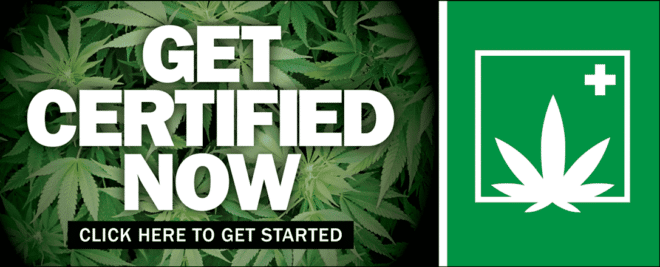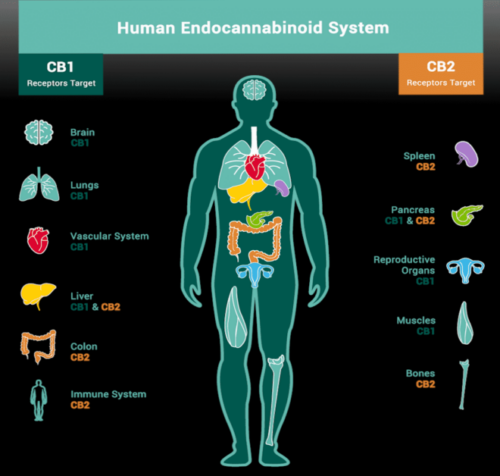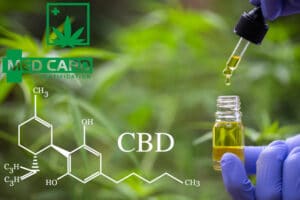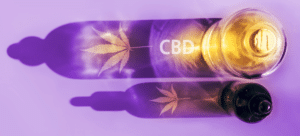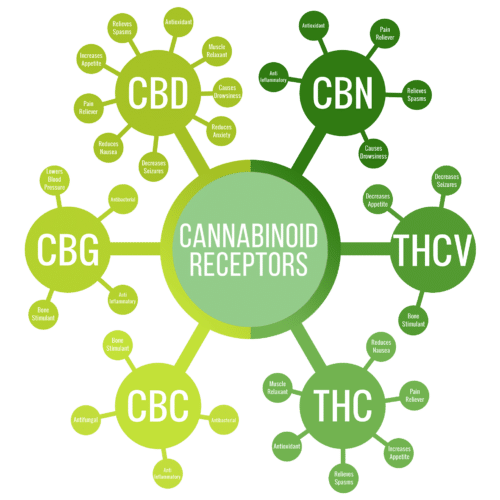
A Quick Guide to THC-O: Is It 3x Stronger Than THC?
- THC-O is an obscure cannabinoid that can be synthesized from legal hemp.
- THC-O is thought to be about three times more psychoactive than delta-9 THC found in marijuana. However, unlike THC, the effects of THC-O are not instantaneous and can take up to a half-hour to be felt, even when smoked.
- Cannabinoids such as THC-O and delta-8 THC fall into a regulatory gray area because they are not produced from marijuana.
- Until there’s been more research, consumers should use extreme caution and not assume that synthesized cannabinoids such as THC-O are safe to use.
Recently, a new cannabinoid has surfaced in the marijuana industry — THC-O, the nickname for THC-O-Acetate, also known as ATHC (not to be confused with THC-A).
This newly-discovered chemical compound is indeed a cannabinoid just like THC, CBD, CBG, and CBN. All of these compounds interact with the cannabinoid receptors found in the brain in various ways. Some of these cannabinoids make you high, while others relieve conditions such as seizures, pain, anxiety, and sleep disorders without intoxication.
Is THC-O legal?
This super-potent cannabinoid is quickly gaining popularity among those who don’t have access to legal marijuana in their state. Some state-licensed cannabis companies feel that unlicensed hemp-derived products such as THC-O are undercutting legal marijuana dispensaries nationwide with non-regulated and unhealthy products.
The legal status of THC-O is rather hazy at this point falling somewhere between federally legal hemp and federally illegal cannabis. Although it’s easy to purchase THC-O tinctures and vape cartridges online without a medical marijuana card, some states consider any form of THC to be illegal. Moreover, at this time, the laws related to cannabinoids are quickly evolving. It’s important to check the laws in your state.
With the exponential growth of hemp-derived compounds, and new cannabis derivatives being discovered all the time, it’s impossible to keep banning them as they surface. However, as federal agencies like the Food and Drug Administration do further research, most experts expect that the FDA will implement strict regulations on these products in the near future.
How is THC-O produced?
THC-O is not a naturally occurring cannabinoid. It is created in a laboratory setting. Producing THC-O requires special equipment and often volatile chemistry.
In the process of making this powerful cannabinoid, all terpenes and other cannabinoids are stripped away. What remains is a super-potent THC-O isolate devoid of aroma or flavor.
Initially, CBD is extracted from CBD-rich hemp. Then delta-8 THC is produced from the CBD. The last stage in producing TCH-O acetate is to bind an acetic anhydride molecule to the delta-8 molecule.
Do NOT try to make THC-O at home. Due to the volatile nature of the acetate, this process should only be carried out in a highly controlled setting.
What are the effects of THC-O?
The medicinal effects of THC-O are fairly well documented for this relatively obscure cannabinoid. The US military knew of THC-O’s existence back in 1949 when they began studying its effects. The only recorded documentation from this period reports that the substance impacted dogs’ muscle coordination twice as much as delta-9 THC.
According to anecdotal reports, the psychoactive effects of THC-O are vastly divergent from regular THC. In fact, laboratory testing has shown that due to the minuscule acetate molecule, THC-O may be roughly three times stronger than garden-variety THC. And some users have likened the effects of THC-O to those associated with magic mushrooms and LSD.
Mechanisms in the body filter out most of the THC-O molecules before they reach the bloodstream. However, because THC-O is significantly stronger than THC, the small amount that manages to stimulate the receptors can cause extreme intoxication.
If you’re considering taking THC-O, keep in mind that marijuana edibles usually only take around 30 minutes to have an effect. TCH-O, on the other hand, may take a half-hour or even longer to kick in. For this reason, even a seasoned pro would be wise to start with tiny amounts of TCH-O when using it for the first time to properly gauge onset time and tolerance levels.
Smoking, vaping, and dabbing regular THC generally has an effect almost immediately. However, if you smoke or vape TCH-O, it may still take up to 30 minutes to have an effect.
According to reliable sources, once the effects of TCH-O surface, they hit with exceptional speed and strength. In most cases, the highest point of the experience is attained within 20 minutes of the first wave.
Is THC-O safe?
One cannabis chemist who has investigated the effects of TCH-O, James Stephens believes that there are so many variations in product quality at this time, it’s hard to properly ascertain TCH-O’s efficacy and safety. Mr. Stephens is alarmed by the lack of specificity on the part of THC-O- acetate producers.
“My biggest fear,” he said, “is it just takes that first overdose to cause the equivalent of a satanic panic or whatever you want to call it.”
There are others in the business expressing concern over health-related issues stemming from TCH-O usage. There is a serious dearth of data-based research and a severe lack of regulation, and mysteries about the substance abound.
For the time being, consumers should approach THC-O products with extreme caution.


